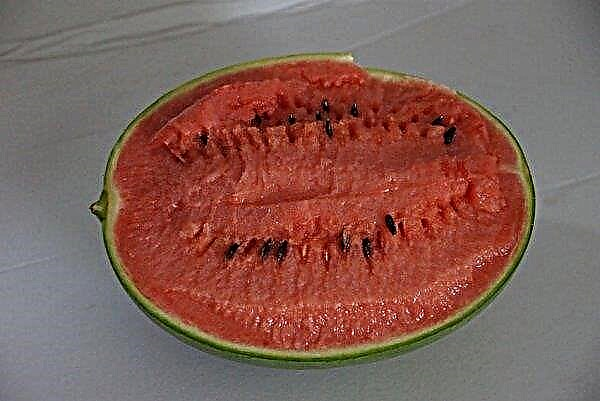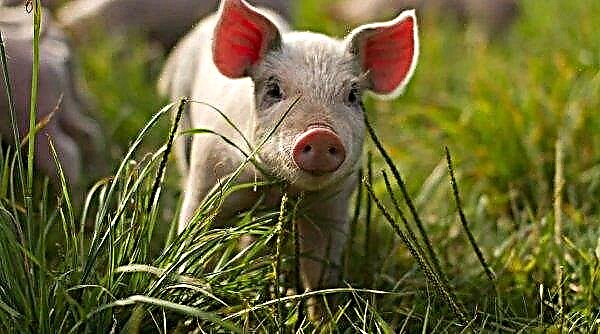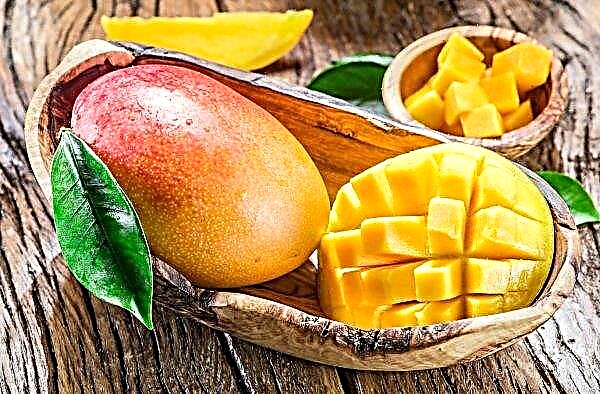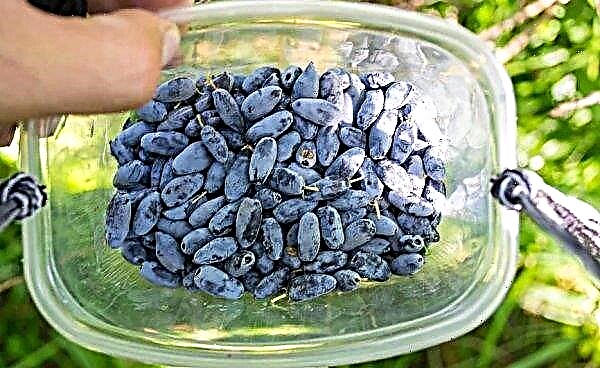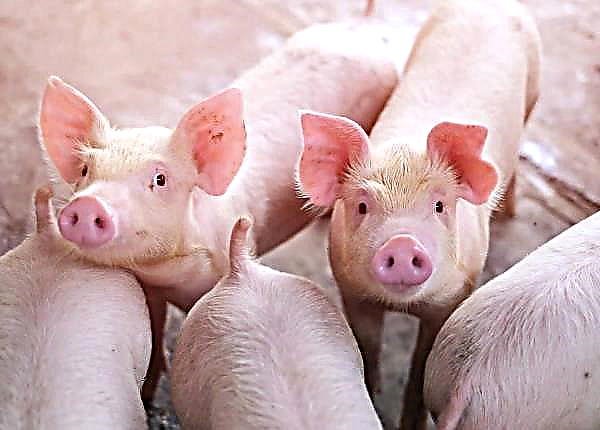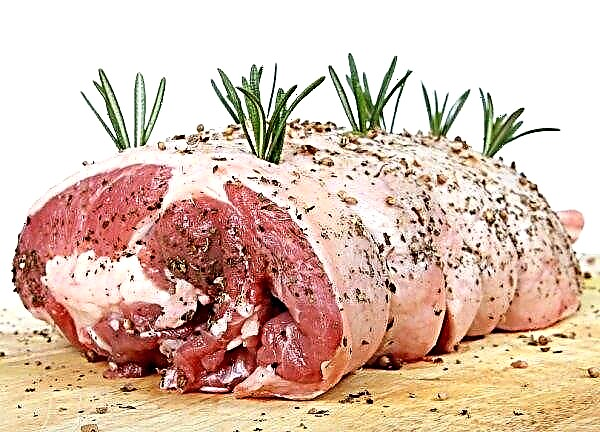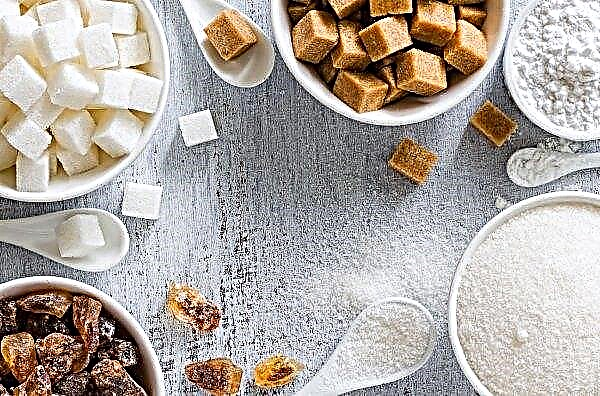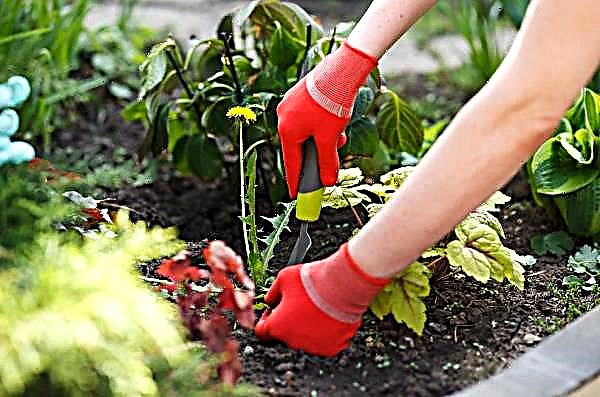Freezing vegetables is one of the popular ways of storing them in winter, so it is not surprising that many housewives try to harvest cabbage in this way. But is it possible to freeze its Beijing variety and how to do it so that the leaves do not lose all their useful properties? You will learn about this from our article.
Is it possible to freeze Chinese cabbage?
Like other varieties of cabbage, the Beijing version is not only possible, but also needs to be frozen, especially in cases where there is not enough space to store whole heads of cabbage in the refrigerator. The main thing that needs to be clarified before harvesting is how exactly you want to put the vegetable in the freezer and what it will be used for in the future.
Did you know? 200 g of Beijing cabbage will be enough to saturate the body with a daily dose of vitamin A and C, which is especially important for children.
Some housewives prefer to grind sheets, others freeze them whole, however, in any case, it is worth controlling the temperature inside the freezer, preventing the culture from defrosting.
Properties of Frozen Beijing Cabbage
- Properly frozen Beijing cabbage in its properties is not inferior to a fresh vegetable, and therefore has the following effect on the human body:
- removes excess accumulated mucus and unnecessary food debris from the intestine;
- normalizes blood coagulation processes and improves night vision (this is facilitated by the vitamins K and A present in the composition);
- strengthens the skeletal system, improves the condition of hair, nails and tooth enamel;
- eliminates problems with constipation;
- contributes to weight loss, as it is digested more slowly;
- improves the state of depression, eliminates headaches.
It is noteworthy that the vegetable belongs to the group of those crops that are able to fully retain all their useful characteristics even after prolonged storage, however, only if all the conditions of this process are observed.

How to freeze Beijing cabbage
Only ripe and healthy vegetables are suitable for winter frosts, with no signs of disease development or pest activity. If in the future you plan to use fruits for stewing or preparing first dishes, then the separated and washed leaves need to be dried and cut into strips, after which it remains to be folded tightly in an airtight bag and, having distributed throughout the space, placed in a quick freezing chamber.
Important! The faster the vegetable freezes, the more attractive it will be after defrosting. For this reason, many housewives are not advised to fill the entire space of the packaging bag using less cabbage.
The second option for freezing vegetables is harvesting whole or cut into two parts leaves, which in some cases are subjected to preliminary heat treatment. So, before laying in the freezer, disassemble the head of cabbage into separate leaves, dip them into boiling water and cover it for 10 minutes, immediately removing the container from the fire. From the leaves prepared in this way, the thickening of the petiole (along its entire length) needs to be cut off, then dried with a paper towel and put in prepared containers for further freezing.

Try to align the leaf plates as much as possible, since when frozen, their structure can easily collapse, and you will get small parts of one leaf. This harvesting option is suitable for those who want to use cabbage for cooking vegetable dishes and even cabbage rolls, although the Beijing variety is not often used for this purpose.
As for the further defrosting of leaves, it should be carried out in several stages: first, it is worth moving the trays with the workpiece to the upper shelves of the refrigerator, and only after the cabbage has thawed a little, it will be possible to move the vegetable to room conditions for complete defrosting. True, this option is more suitable for whole leaf plates, so if you froze a chopped vegetable, you can immediately throw it into a pan and cook.
Other storage methods
If there is already no place in the freezer, and you have harvested a large crop of Beijing cabbage, you will have to consider alternative options for storing it. The most popular option is to place the vegetable in the cellar, with preliminary preparation of the place. In addition, cabbage can also be sent to the refrigeration compartments for vegetables, but in any case, certain conditions must be observed.

In the cellar
The cellar room is often used for winter storage of vegetable crops, therefore, most likely, there are already prepared places for placing blanks. The only requirement is stable temperature maintenance during the winter season (no higher than + 8 ... + 10 ° C) and humidity control, which should initially be at a low level.
Before placing Chinese cabbage in boxes or immediately on shelves, each head of cabbage should be wrapped in cling film or placed in a plastic bagtightly tying it. In this form, vegetables are often sent to wooden crates, which can be covered with a lid on top, while ensuring good ventilation of contents from all sides.
Important! If the air in the cellar is too dry, you can put a container of water in the room, but if the temperature drops below acceptable values (especially to 0°) will have to carry cabbage to protect it from rotting heads.
In fridge
Storage of cabbage in the refrigerator is more relevant for residents of urban apartments who are not able to use the cellar. Preliminary preparation of vegetables in this case is carried out in accordance with generally accepted rules: all selected specimens must be dry, clean, without signs of damage or traces of diseases and pests.
 When wrapping heads in a cling film, make sure that no condensation forms inside.
When wrapping heads in a cling film, make sure that no condensation forms inside.
The ideal storage location would be special drawers at the bottom of the refrigerator, and if they are not provided for by the design of the device, you will have to purchase separate plastic containers with tight lids. During the entire period of storage of cabbage, it is necessary to regularly remove dried leaves, inspecting vegetables for signs of spoilage.
If all the requirements are met, it will be possible to use Beijing cabbage for a month without fearing for a decrease in its taste or beneficial properties. In the freezer, this period is extended to 3–6 months, although many housewives use the vegetable after this date, especially if the leaves have not thawed and will be used for cooking first courses or stewing.
Did you know? The wandering of the Beijing variety of cabbage around the world began from the territory of China about 5000 years ago, however, in Europe and Russia they started talking about it only after the 70s of the last century.
Useful Tips
Even in the simple process of harvesting Beijing cabbage for long-term winter storage, there are some features that affect the success of the final result. First of all, it is worth considering the following recommendations:
- it is better to collect cabbage from the garden just before freezing, so that the vegetables are optimally juicy and fresh;
- delaying the harvest is not worth it, especially if cooling is planned (frozen specimens will not be able to be stored for a long time and will quickly deteriorate);
- Peking should be cut only in the afternoon when there are no drops of morning dew or rain on it (you do not need to wash the leaves before laying them for storage, you just need to clean them from the ground and, if necessary, remove the top sheets);
- Only healthy heads of cabbage should be used for freezing, without signs of damage by diseases and pests, therefore, before directly storing the vegetable for storage, inspect the heads of cabbage again and discard spoiled or cracked ones;
- when stored in a refrigerator, you should not place Chinese cabbage next to fruits (especially apples), since they can significantly reduce the shelf life of the vegetable.

In general, any recipe for homemade freezing Beijing cabbage can be considered a successful solution to the problem of its storage. A short preparation of the vegetable allows you to preserve it for a long time, and longer than in a cellar or basement.

